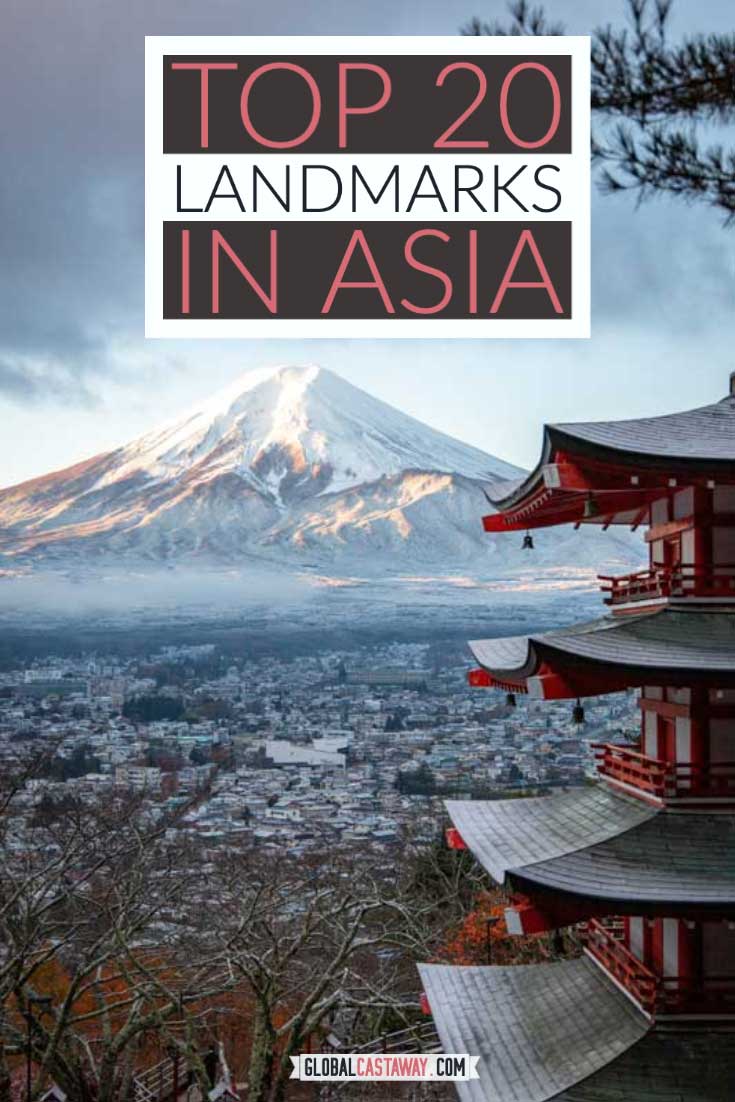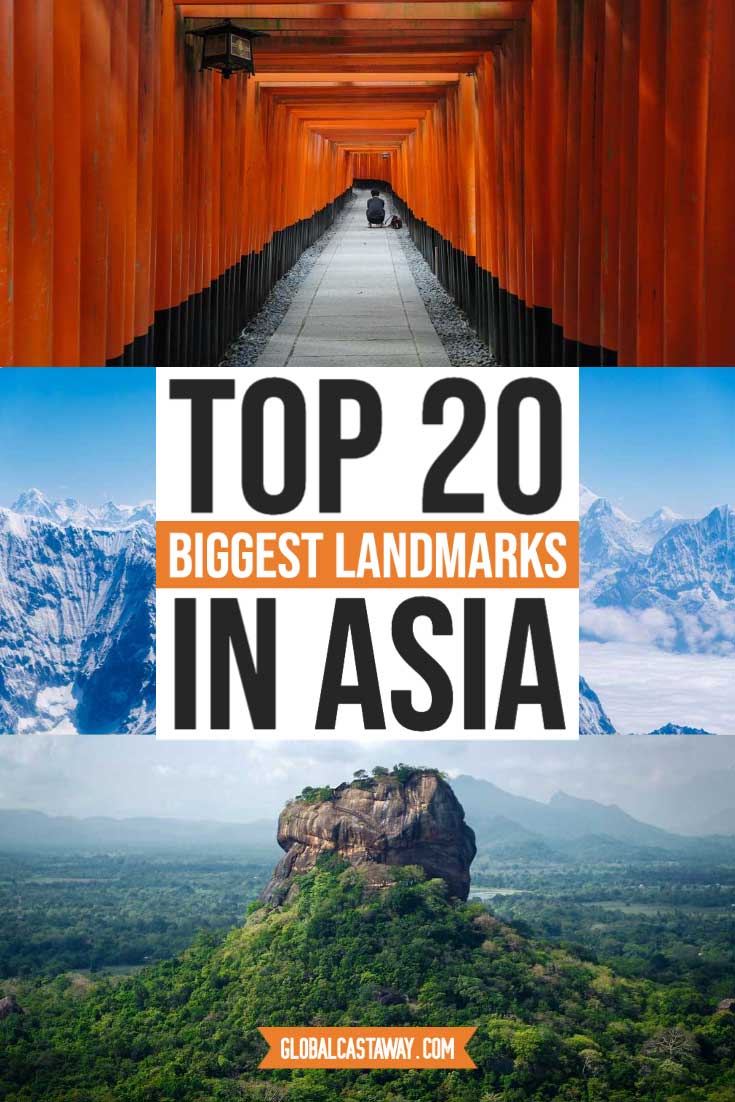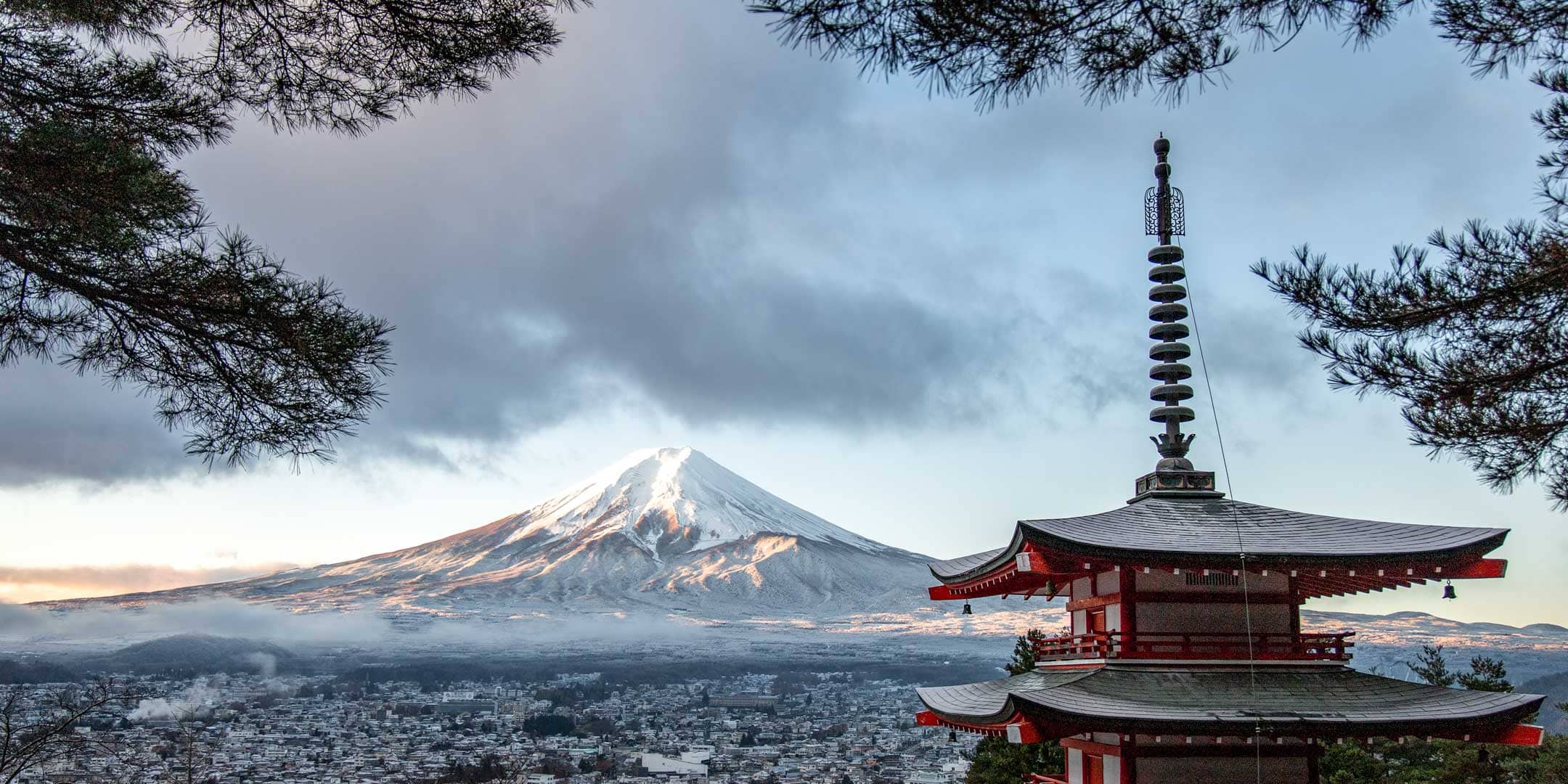Exploring the biggest landmarks in Asia is a bucket list adventure like no other. The largest continent has an abundance of natural treasures, deep cultural routes, and man-made marvels that can easily overwhelm you.
Prepare for an extra dosage of wanderlust because you’re about to embark on a virtual journey that will take you through places, so extraterrestrial you wouldn’t believe are real.
Are you ready? Here are the top 20 landmarks in Asia!
Angkor Wat and the Siem Reap Temples, Cambodia
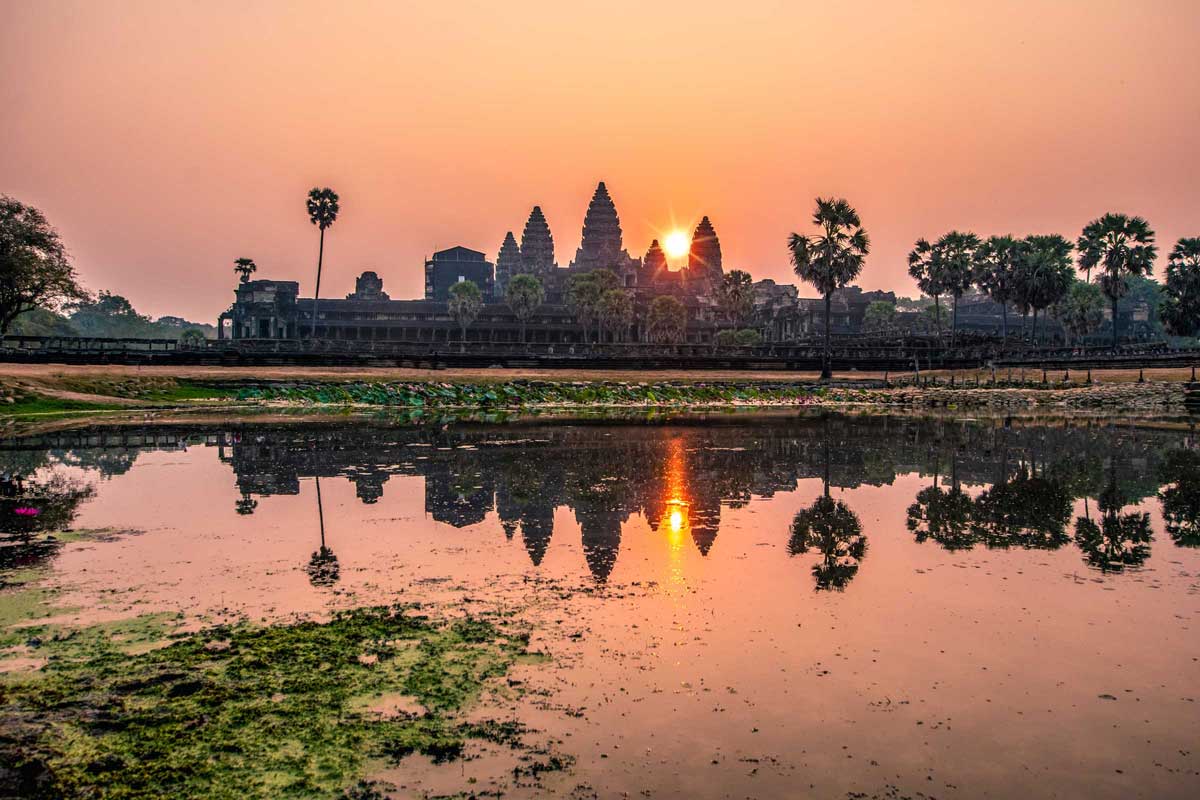
One of the most well-known sights on the list, a symbol of Cambodia and entire Southeast Asia, a temple surrounded by myths and legends, the one, the only, Angkor Wat.
Built by the mighty Khmer empire, between the 10th and 15th centuries, Angkor Wat and the other Siem Reap temples give you the chance to explore some of the most exciting ancient ruins in the world. The detailed bas-reliefs, curious blend with the surrounding jungle, and the hundreds myths and legends, earn Angkor Wat and the Siem Reap temples a top spot as one of the best landmarks in Asia.
Castaway Fact
According to the inscriptions, the construction of Angkor Wat took 35 years, 300,000 laborers, and 6,000 elephants.
Halong Bay, Vietnam

Next on our list, we have the pride of Vietnam – the enchanting Halong Bay. Named after the heavenly dragons who once saved the country (if you believe the legends), Halong Bay is dotted with 1,600 limestone islands and islets and covers an area of over 1,500 sq km.
The only way to enjoy the incredible beauty of this UNESCO World Heritage Site is by embarking on a few-days-long cruise, which makes Halong Bay even more of a bucket list experience.
Castaway Fact
One of the islands in the bay is called Ti Top island. It’s named in honor of the Russian astronaut Gherman Titov. Ti Top is the way Vietnamese pronounce Titov.
Komodo National Park, Indonesia

A proud representative of the New Seven Wonders of The World, Komodo is one of the most peculiar islands on the globe. Home to the endemic Komodo Dragon (the largest lizard on Earth), the island is part of Indonesia’s most stunning national park.
Komodo National Park will offer an incredible journey around 29 picturesque islands and countless vibrant coral reefs that sustain one of the world’s richest marine ecosystems.
Castaway Fact
Even though Komodo Dragons can run 11 miles per hour and swim up to 13, the biggest of them prefer to lazily chill around the village’s kitchen.
See Also: Biggest Landmarks in Oceania
Borobudur, Indonesia
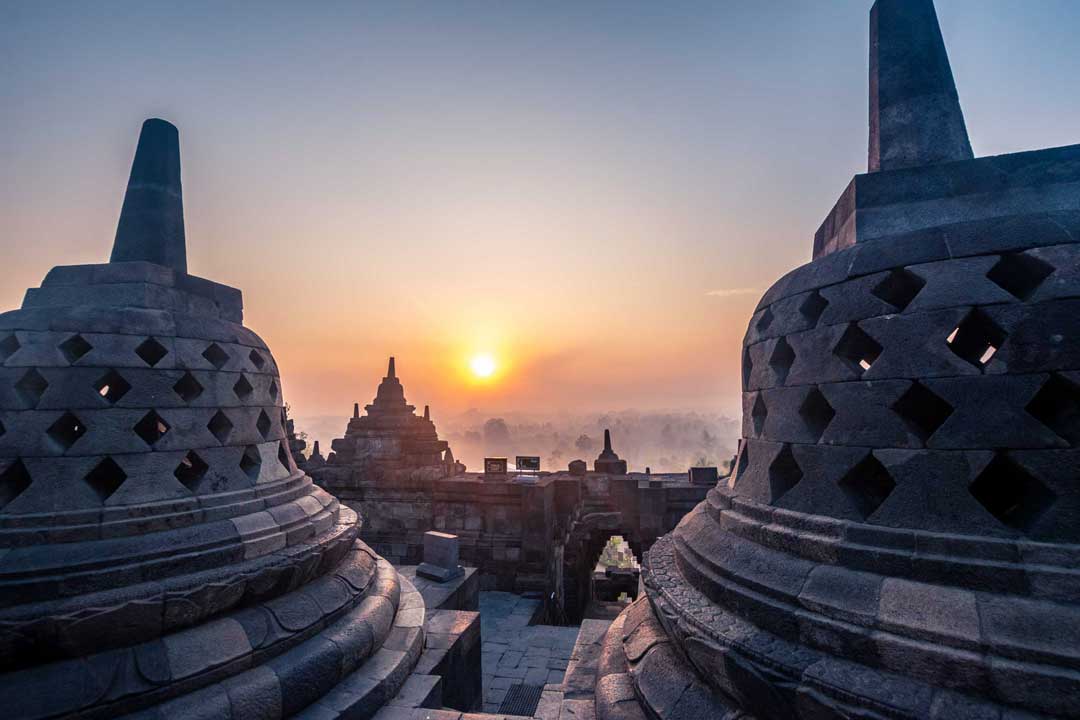
Located in central Java, Borobudur is the largest Buddhist temple in the world and one of the most famous landmarks in Indonesia. Erected between the 8th and the 9th century, Borobudur is renowned for its 73 bell-shaped stupas, all having a Buddha statue inside.
Offering one of the most popular sunrise experiences in Asia, and proudly presenting 2,672 relief panels and more than 500 Buddha statues, this grand Indonesian temple easily earns its spot as one of the biggest landmarks in Asia.
Castaway Fact
Borobudur is built out of interlocked stone blocks without the use of any adhesive. Since the temple is more than 1000 years old, this building method must be a hell of a good one.
Taj Mahal, India

The pride of India – Taj Mahal, is a giant mausoleum complex dedicated to love. Commissioned by the Mughal emperor Shah Jahan in 1632, the construction of the gorgeous Taj took more than 20 years before it was finally ready to house the remains of the emperor’s beloved wife.
Today Taj Mahal is one of the most recognizable buildings in the world and welcomes 7 to 8 million tourists every year.
Castaway Fact
Taj Mahal is a symbol of the undying love of the emperor to his favorite wife – Mumtaz Mahal, who died after giving birth to the couple’s 14th child.
Great Wall of China
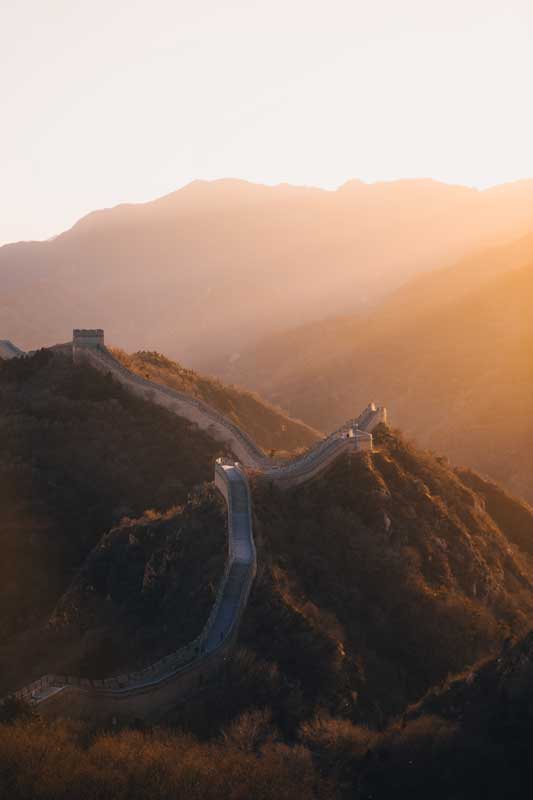
Undoubtedly one of the most massive sights in the world, the Great Wall of China, is 21,196 km (13,170 mi) long and required more than 2300 years to get finished! Yup, you’ve read that right, 2300 years (to be fair, it was not 2300 consecutive years).
It took four great Chinese dynasties to complete this incredible feat. Started by the Zhou dynasty (770–221 BC), continued by the Qin (221–207 BC) and Han (206 BC – 220 AD) dynasties, and finally finished by the Ming dynasty (1368–1644).
Castaway Fact
It’s a common misconception that the wall was built to repel the Mongols. In fact, the Great Wall was commissioned around 1000 years before the emergence of the Mongols. The biggest threat at that time was from the Xiongnu tribes.
See Also: Top 20 Landmarks in North America
Forbidden City, China
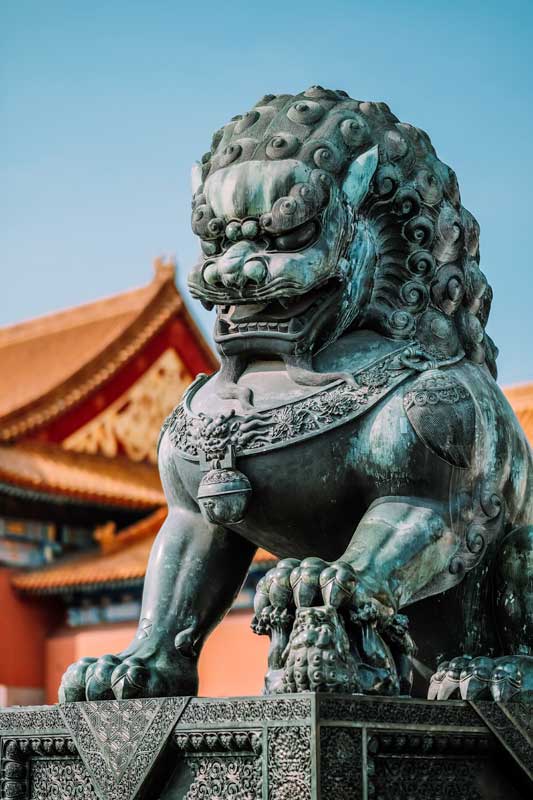
Constructed in 1420, during the early Ming Dynasty, The Forbidden City is China’s best-preserved palace and the largest ancient palatial structure in the world. Serving as an imperial palace of China for 492 years (1420–1912), the 980 buildings in the Forbidden City complex used to be home to 24 emperors from the Ming and Quin dynasties.
Located in the center of modern Beijing, The Forbidden City welcomes around 14 million tourists per year, making it one of the most visited landmarks in Asia.
Castaway Fact
It took 1,000,000 workers (100,000 of which were craftsmen) 14 years to complete this astonishing architecture marvel.
Mount Fuji, Japan
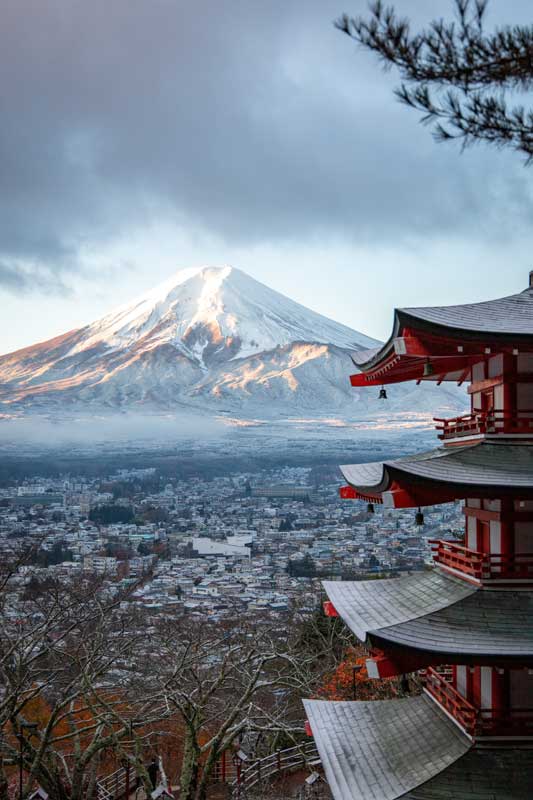
We continue our journey with one of the most recognizable mountains in the world. The 3776 meters-high Mount Fuji is located on the Japanese island of Honshū and is still an active volcano (even though its last eruption was in 1707).
Due to its almost perfect conical form, Mount Fuji had gained quite the popularity around the world. Today, it’s considered to be the sacred symbol of Japan and one of the country’s most revered landmarks.
Castaway Fact
The first known ascent of Mount Fuji was in 663 by a local monk. Due to its sacred nature, women were not allowed to climb the volcano until the 19th century.
Fushimi Inari-Taisha, Japan

One of the most picturesque landmarks on the list, Fushimi Inari-Taisha, is a Shinto Shrine located in southern Kyoto.
Being the most important Inari (God of rice) shrine in the country, this peculiar complex became world-famous due to the thousands of vermilion torii gates that create an elaborate trail leading into the wooded forest of the sacred Mount Inari.
Castaway Fact
There are more than 4,000 sacred gates at Fushimi Inari-Taisha. Each one of them represents a donation. If you want your name on a gate, you need to donate from 4,000 USD for a small one to 10,000 USD for the biggest.
See Also: Top 20 Biggest Landmarks in Europe
Petronas Twin Towers, Malaysia
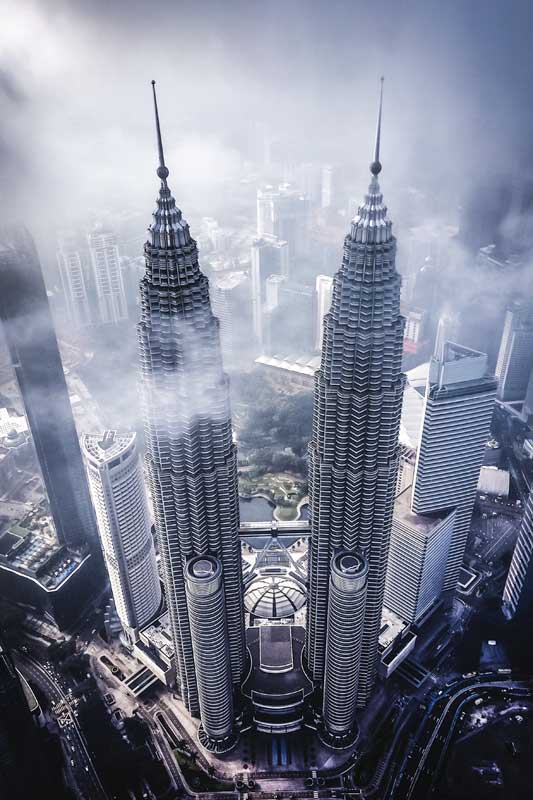
A symbol of Malaysia, Petronas Twin Towers were completed in 1998 and, to this day, continue to be the tallest pair of buildings in the world (452 meters). Used as a headquarters of Petronas (the national petroleum company of Malaysia), the twin towers offer 88 stores of occupiable space and a gazillion of photo ops.
The Petronas Twin Towers may not be as old as the other landmarks on the list, but their magnificence and popularity undoubtedly make them one of the (literally) biggest landmarks in Asia.
Castaway Fact
The twin towers were built not only to be the tallest buildings in the world but also to resonate with the Malaysian identity. Looked from above, each tower’s cross-section resembles the eight-pointed star – a symbol of the Islamic culture.
See Also: The Ultimate Cameron Highlands Itinerary
Marina Bay Sands, Singapore

The first and probably the only hotel to feature in my ‘top landmarks’ lists, Marina Bay Sands, is the symbol of progressive Singapore and one of the most famous buildings in Asia. Opened in 2010, Marina Bay quickly gained popularity due to its extravagant design resembling a ship on top of skyscrapers.
Offering an incredible infinity pool at the top, Marina Bay Sands is the epitome of bucket list hotel stay and truly one of the most glamorous landmarks in Asia.
Castaway Fact
Marina Bay cost 5.88 billion USD, making it the most expensive stand-alone integrated resort property ever built.
See Also: What to do in Penang
Burj Khalifa, Dubai
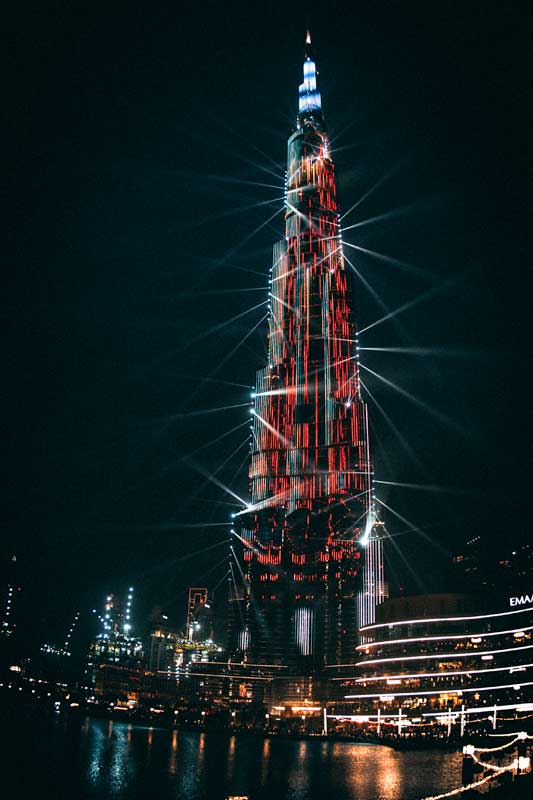
For our next few landmarks, we go a bit west to the mystical Arabic Peninsula. Once an inhospitable desert wasteland, today, the peninsula is revered for its grand and lavish projects. It’s not surprising that one of the most impressive constructions in the history of mankind is right there.
Located in the most populated city of the United Arabic Emirates – Dubai, Burj Khalifa stands above…well…everything. With its 828 meters (2716.5 feet), this incredible Dubai skyscraper is the tallest building in the world and one of the most impressive Asian landmarks.
Castaway Fact
It took 55,000 tons of steel rebar, 110,000 tons of concrete, and 22,000,000 man-hours to finish Burj Khalfa.
Sheikh Zayed Grand Mosque, Abu Dhabi

We stay in UAE, but we move to the country’s capital – Abu Dhabi, where we find our next landmark – one of the world’s largest and most marvelous mosques. Sheikh Zayed Grand Mosque took 11 years to be completed (1996-2007), and today it stands proud as the symbol of Abu Dhabi.
By adopting a progressive open-door policy, the Sheikh Zayed Grand Mosque attracts more than 5 million tourists per year and can easily claim the title of the most photographed mosque in the world.
Castaway Fact
The carpet in Sheikh Zayed Grand Mosque’s main prayer hall is the world’s largest hand-knotted carpet. It took 1,200 workers, 8 months to design, 12 months to knot, and 2 months to assemble the monstrous 5,700 square meters carpet.
Petra, Jordan

Don’t get the impression that Arabia can offer only luxurious modern buildings. One of the New Seven Wonders of The World is located right there. The ancient city of Petra in Jordan is one of the most recognizable and sought-after ancient sites.
Offering plenty of well-preserved antique structures, including the incredibly picturesque Monastery and, of course, the home of Indiana Jones’ holly Grail – the Treasury, the former capital of the great Nabataean Kingdom is a world-renounced landmark that guarantees a memorable trip.
Castaway Fact
The name Petra comes from the Greek word ‘Petros’ which literally means ‘rocks’. Uninspired name if you ask me.
Grand Palace, Thailand
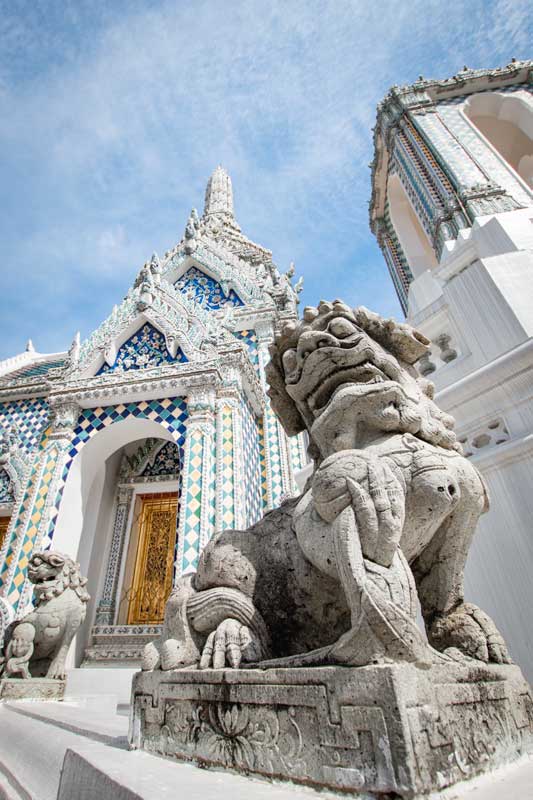
We are back in Southeast Asia, this time in the Land of Smiles – Thailand. Located in Bangkok, we find the Grand Palace – a complex of opulent buildings that is the most popular attraction in the country. It’s often said that visiting Bangkok and skipping the Grand Palace is like visiting Paris and skipping the Eiffel Tower.
One of the reasons behind Grand Palace’s popularity is Wat Phra Kaew temple. The grandest Buddhist temple in one of the most Buddhist countries in the world, Wat Phra Kaew, is also known as the ‘Temple of the Emerald Buddha’, and draws approximately 8 million visitors every year!
Castaway Fact
According to the legend, the emerald Buddha statue that resides in the temple originated in India and brings “prosperity and pre-eminence to each country in which it resides”.
See Also: Top 20 Landmarks in Africa
Wat Rong Khun, Thailand
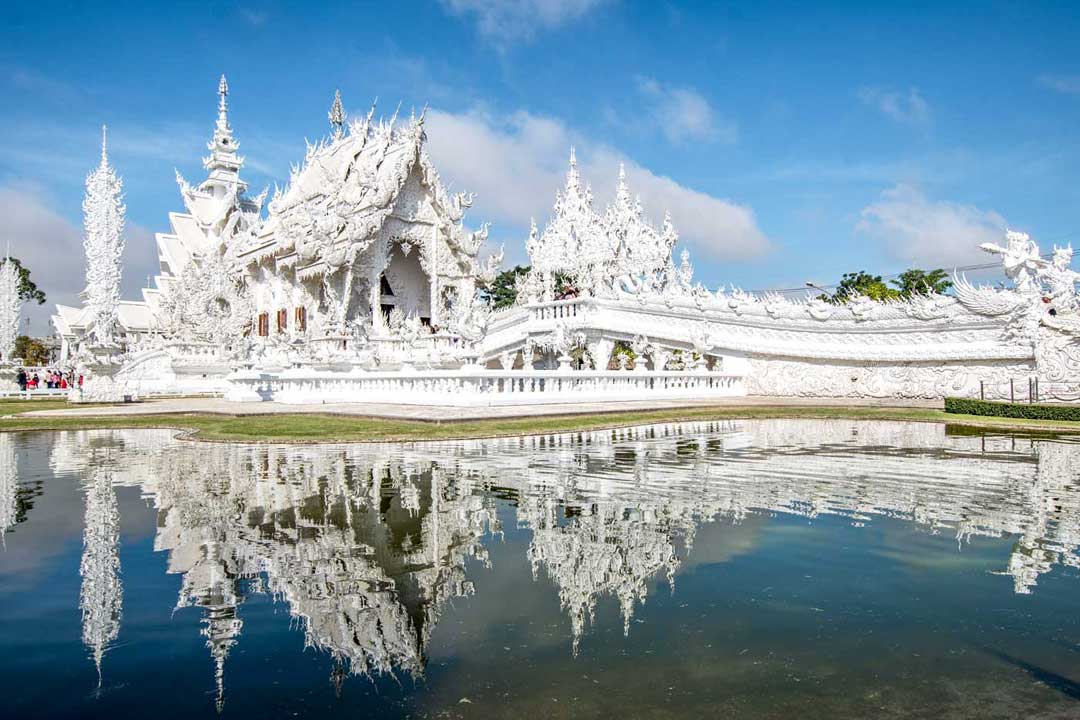
We keep exploring the stunning Thai temples to find this one-of-a-kind masterpiece. Wat Rong Khun or ‘The White Temple of Chiang Rai’ is one of the most beautiful and also bizarre religious shrines on the globe.
Being saved from despair by the visual artist and painter Chalermchai Kositpipat, Wat Rong Khun blends the ancient Buddhist teachings with contemporary idols to create a visually stunning jewel full of metaphors and peculiar symbols.
Castaway Fact
The murals inside Wat Rong Khun are one of a kind. They depict the modern hell by blending Buddhist demons with mainstream characters such as Pikachu, Batman, Michael Jackson, etc.
Mount Everest, Nepal/China
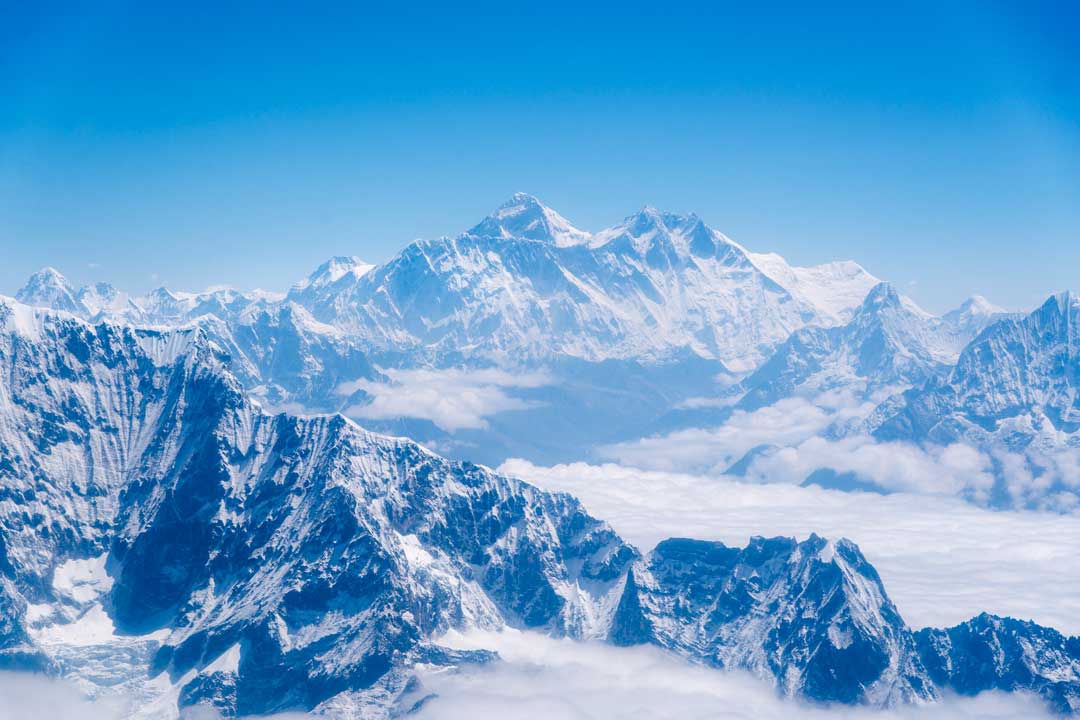
You wouldn’t think I’d miss the most famous mountain in the world, would you? Standing at 8,848m (29,029 ft) above the sea level, the legendary Mount Everest is the world’s tallest mountain. Located on the border of China and Nepal, Everest has been a test for human courage, determination, and willpower for years.
Even though today there have been over 4,000 confirmed successful climbers on Mount Everest, getting to the top of the world is still one of the most glorious and risky endeavors to attempt.
Castaway Fact
Just a bit under 1000 people attempt to climb Everest every year. About half of them fail.
Cappadocia, Turkey
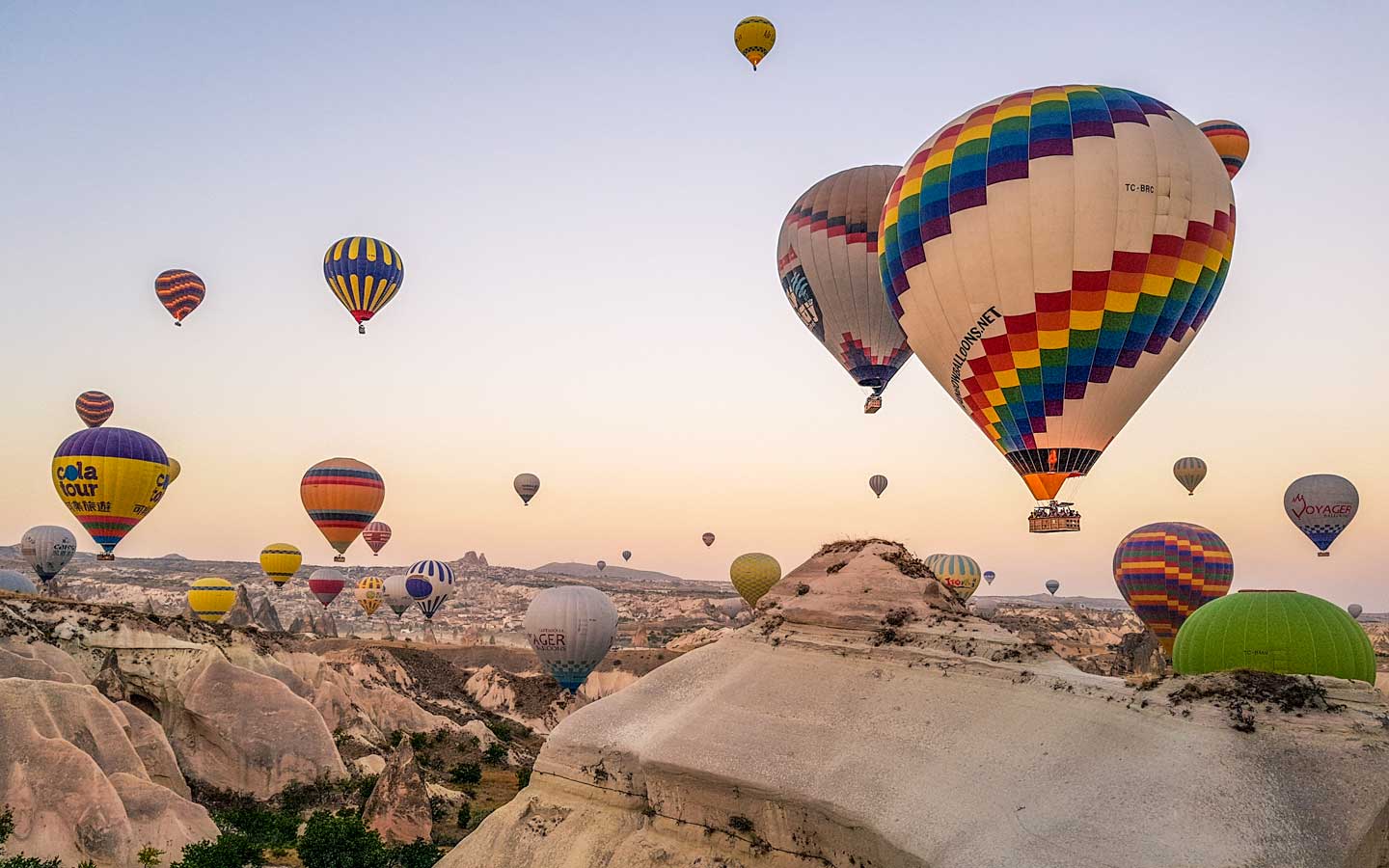
We take a break from the far east to go to a country on the border with Europe. Turkey may not be entirely in Asia, but our next landmark has nothing to do with Europe. It has nothing to do with anything, actually.
The area of Cappadocia is absolutely one of a kind. A place where all houses (and hotels) are carved inside rocks, where every morning, there are hundreds of colorful hot air balloons in the sky, a place where you forget about the real world and submerge into a fairytale.
Castaway Fact
It’s widely known that Cappadocia’s name derives from the Persian word Katpaktukya, which means ‘the land of beautiful horses. In reality, though, this whole story was made up by a famous Turkish photographer to avoid the wrath of the 1980 coup administration and save the area.
Chocolate Hills, The Philippines
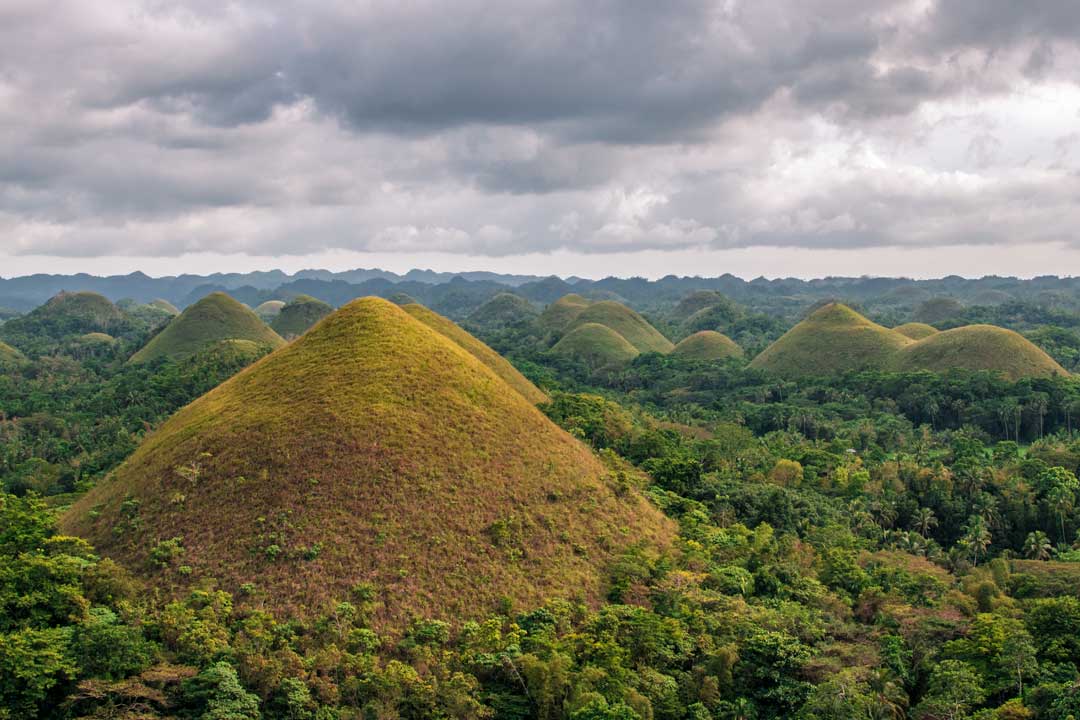
One of the most peculiar landmarks on the list, the Chocolate Hills are located on the island of Bohol in the Philippines. Varying in size from 30 to 120 meters, these 1,268 peculiarly shaped hills get their name from the change of color they go through during summer. The lush green mounts suddenly become chocolate-brown, creating the most spectacular view in the country.
Castaway Fact
There are plenty of legends about the origin of the hills. My favorite one tells the story of a giant who used to live in the area. He fell in love with a girl from the village, but the girl didn’t like him back because he was too fat. The giant was heartbroken and started taking laxatives, thus creating the Chocolate Hills.
Sigiriya Fortress, Sri Lanka
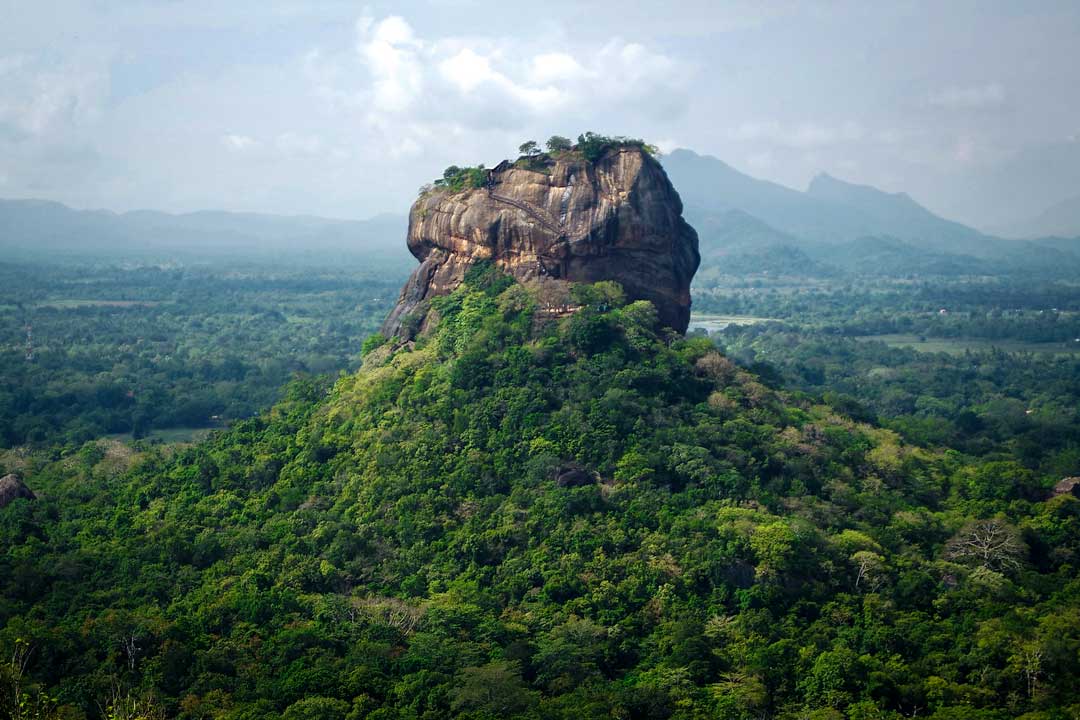
We cap the list with a beautiful blend of man-made and nature. Located in the northern Matale District near the town of Dambulla, Sigiriya is an ancient rock fortress that is also the most prominent attraction in Sri Lanka.
Referred by the locals as ‘The 8th Wonder of the World’, the fortress complex includes remnants of a ruined palace, ancient defend systems, canals, alleys, and even fountains – all of them perched on a slab of rock, surrounded by lush jungle.
Castaway Fact
About halfway up the rock, there is a gateway in the form of an enormous lion. The name of the whole fortress is derived from this structure – Sīnhāgiri, the Lion Rock.
That’s all from me, I hope you enjoyed the biggest landmarks in Asia.
————————————
If you haven’t planned your trip there yet, find out how I plan my trips!
————————————
I have 524 bucket list ideas for Asia. See my impossible bucket list of 1700+ adventures!
How many landmarks have you been to?
Some of the above are affiliate links and I will earn a percentage of the sale if you purchase through them at no extra cost to you. This helps keep my site running – so thanks in advance for your support!

